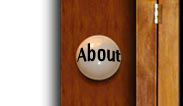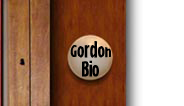 |
 |
Act IIn 1943, a former cheesecake model, known only as "Acquanetta," lit up the screen in the B-movie horror film and now cult classic, Captive Wild Woman. Stunning and exotic, Acquanetta played the untameable and gorgeous creation resulting from a mad scientist’s experiments on an ape, a role the young actress sizzled in and played so well a sequel was soon in the can. So began a brief career in bread-and-butter films that ended only a few years later when Acquanetta inexplicably walked away from the Hollywood studio system and swanned off to Mexico.
Her past is a mystery. Because of her come-hither stare and sensuous pout, Walter Winchell nicknamed her "The Venezuelan Volcano." In interviews, she claimed Native American roots, and her obituary in 2004 stated that she was born on an Indian reservation near Cheyenne, Wyoming. Who was Acquanetta, and why did she walk out on her contract with Universal Pictures at the height of her career?
In Acquanetta, the mock serious, campy spirit of horror movies is turned inside out in a bravura, one-act deconstruction of the five minutes that changed Acquanetta’s life forever. The mad scientist Doctor, the insistent Ape, the reluctant Brainy Woman, the visionary Director and the beautiful monster herself, Acquanetta, gather in this re-imagining of that fateful experiment. In soaring, sometimes comic and always indelible songs that perfectly capture the heightened drama of horror films, these vivid characters reveal their inner longings and emotional shadows in what is ultimately a haunting meditation on the meaning of identity, transformation, stereotypes and typecasting, set in the heyday of Hollywood gloss.
Act II
Acquanetta, 20 years later, is on the set of "Acqua's Corner," a Friday night TV show in which she plays host to the Late Night Fright Night double-feature movie in Tucson, AZ, sponsored by her car dealer husband. The language of her songs intersperses lead-in patter to the horror movies with ad campaign lingo for her husband's business and prizes that include "a trunk full of groceries and an Acquanetta doll." Acquanetta, clad in an exotic caftan and sporting her dramatic widow's peak, braided black hair and sparkling turquoise jewelry, also interviews notables, including the likes of Walter Winchell, Orson Welles and other people from her past.
In another scene, Acquanetta and her brother, a judge, trade versions of their family history, with Acquanetta expanding on her personal mythology of being born a Native American near the Wind River in Ozone, Wyoming, with a mother named Sky Blue Water and a great-grandfather descended from British royalty, and the brother singing in counterpoint about their mother who cleaned houses and the father who worked in the factory in Morristown, Pennsylvania.
Acquanetta sings:
Here in Arizona they call me a medium
I do sometimes see the future
It's like a waking dream
People stand in line to ask me, Acquanetta,
what's in store for me?
I touch their hands and sometimes I can see.
She sings of the magical land she lives on, where fountains burst spontaneously from the earth to water plants that bloom in 20 different blossoms. Soon the logic of what we see breaks down completely -- Acquanetta might drive by in her pink Continental while J. Edgar Hoover photographs the Ape, the Mad Scientist communicates with Frank Sinatra, the Brainy Woman is rejected by William Randolph Hearst. The stage becomes a trippy mash-up of the characters in her life as they might be crowded and confused in her brain -- part surrealistic, part psychedelic, that takes place simultaneously in a car lot and the set for the Friday night double features.
Finally we find Acquanetta in a hospital bed, 30 years later, not unlike the operating table from Act I. The crazy confusion of colors has been bleached out to a black-white-and-gray palate, reminiscent of the first Act. It is a nursing home, an Alzheimer's facility. Surrounding her in other beds are the Ape and other characters from the opening, except for the Mad Scientist/Doctor, who stands by Acquanetta's bed and leans in to sing, joined by the other characters on stage:
Do you remember what happened?
Do you remember anything from your past life?
Your mind is my mind.
Your every thought is my thought.
What I tell you to do you will do.
What I tell you not to do you will not do.
To which Acquanetta replies:
The first shall be last and the last shall be first.
And the chorus sings:
Introducing Acquanetta....
|
|
 |
 |